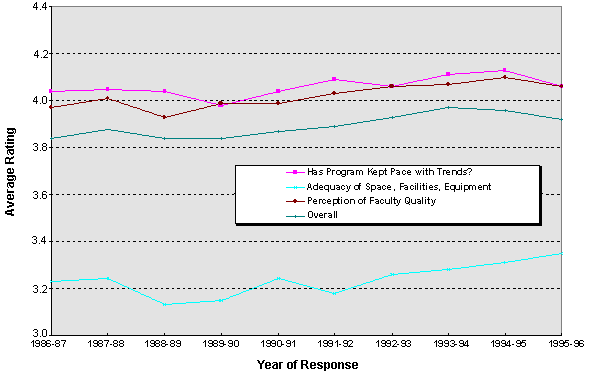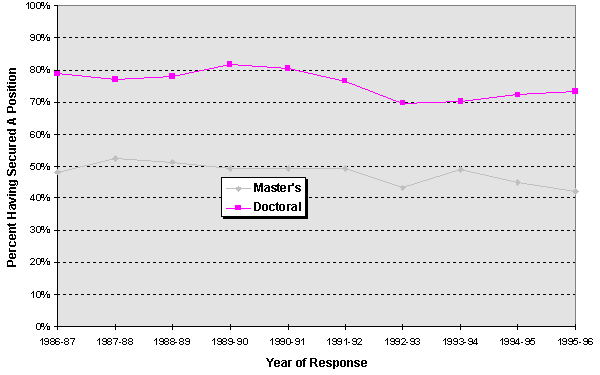
Perceived Program Quality
Post-Graduation Plans
For Further Information
The following is from:
The Graduate School routinely collects exit surveys from students completing master's and doctoral degrees, and the results of these surveys are sent to department chairs annually. This document summarizes the basic reporting in a longitudinal fashion, outlining a number of institutional trends regarding perceived program quality and post-graduation plans.
Doctoral students tend to express more favorable views of their programs than do master's students. The disparity is greatest with respect to perceived levels of satisfaction with faculty supervision and guidance, perhaps reflecting less frequent faculty contact for master's students.
The following graduate programs (with at least five respondents) fall in the top 10% of overall program quality for 1995-96:
| Zoology | 4.78 |
| Education-Bothell | 4.77 |
| Atmospheric Sciences | 4.67 |
| Dentistry | 4.67 |
| Classics | 4.67 |
| Biostatistics | 4.62 |
| Computer Science & Engr. | 4.61 |

Only 42% of 1995 master's respondents indicated that they had secured a position (see Figure 2). This is down from a high of 52% in 1988. Similarly, doctoral respondents show a decline from a high of 82% in 1989 to 73% in 1995.
In the following programs (with five or more 1995 respondents), 90% or more report having secured a position:
| Biostatistics | 100% |
| Epidemiology | 100% |
| Speech Communication | 100% |
| Computer Science & Engr. | 92% |
| Fisheries | 91% |
Of those indicating that they had secured a position, 39% of doctoral respondents and 74% of master's respondents indicated that the position was located in Washington State.
When considering these numbers, it is important to realize that the reported rate of success in finding positions would probably be higher if follow-up studies were conducted. In addition, anecdotal evidence suggests that many students who initially secure positions outside Washington State return within a few years. The Graduate School is working with departments to gather information regarding doctoral placement over the past ten years, and will share these findings with the University community.

http://www.grad.washington.edu/stats/exitsurv/exitsurv96-97/index.htm